Guimarães - Accessible tour
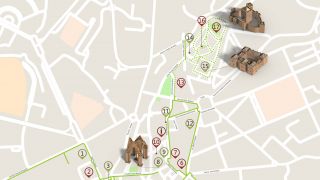
Located in the North of Portugal, Guimarães has a well preserved mediaeval historic centre, classified by UNESCO as World Heritage of Humanity and it is one that deserves a lengthy visit.
This city has played a fundamental role in the formation of the country, a fact proudly remembered in its walls by the inscription "Portugal was born here". It occupies hilly terrain, with slopes that are not always easy for people with limited mobility to negotiate. Some of the streets have narrow footpaths, which also hinders movement, but they are in a good state of repair so they are stable and convenient to use.
Download the map and follow the tour
To discover the many charms of Guimarães we propose an itinerary whose starting point is the Platform for Arts and Creativity (Plataforma das Artes e Criatividade) (1) a building created as part of an award-winning architecture project to convert the Municipal Market. Inside are concert halls, exhibition rooms and the José de Guimarães International Arts Centre. This is an area that is fully accessible to all, which is not the case in the next place to visit. In fact, the Martins Sarmento Archaeological Museum (2), one of the oldest museums of its kind has barriers that prevent independent access.
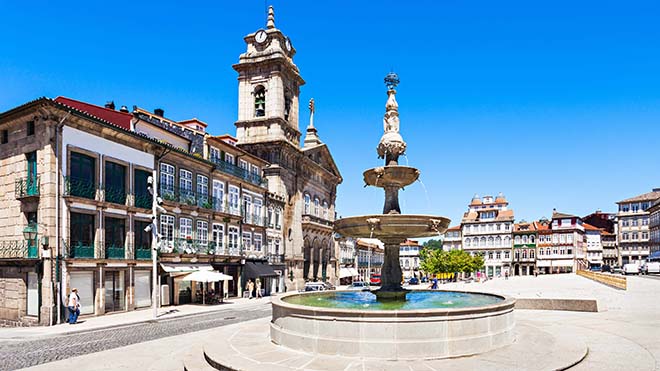
Photo: Largo do Toural © Shutterstock_saiko3p
Very close is the Largo do Toural (3), an ample and fully accessible area where visitors can appreciate the façades of the harmonious and well preserved surrounding buildings. At one end of this square, which is one of the main squares of the city, is the Church of São Francisco (4), originally in Gothic style, and that in the baroque era acquired generous decoration with tiled floors and gilded wood carvings. Access is facilitated by a ramp, but it is not always possible to move about inside because the spaces are narrow.

Photo: Igreja da Consolação e dos Santos Passos © Shutterstock_Sergey Peterman
Continuing along Alameda de São Dâmaso, you will find a large green space framed by the Church of Nossa Senhora da Consolação e dos Santos Passos (Our Lady of Consolation and the Holy Steps) (5) where all the main city festivities - the Gualterianas - take place in August. The garden is fully accessible, but the church has stairs at the entrance which impede independent access. Framing this scenario, on the horizon you can see the Montanha da Penha, an area that can be accessed by car and that has several leisure areas, ancient woodland and a sanctuary that attracts crowded pilgrimages.

Photo: Igreja de Nossa Senhora da Oliveira © Shutterstock_saiko3p
The route continues towards the heart of the city, going past the Alberto Sampaio Museum (6) which has an important collection of stone statuary. However, it is not accessible to persons in wheelchairs because there is a step right at the entrance, and access to the first floor is also difficult. The museum occupies a large part of the Collegiate Church of Nossa Senhora da Oliveira, whose Church (7), founded in the 14th century, boasts a grand staircase at the entrance that prevents people in wheelchairs from gaining access independently.

Photo: Largo do Toural © Shutterstock_PN_UN_cristovao
In front of the entrance of the Church, the Padrão do Salado (8) celebrates the victory at the battle that took place in 1340 and has accessible surroundings in Largo da Oliveira (9) an open space where the terraces can sometimes pose obstacles to movement, such as footpaths that are narrow or not lowered. Also noteworthy is the group of buildings that surround this square, like those in Praça de São Tiago (10) and the Rua de Santa Maria (11) that retain their mediaeval lines. Dating from the baroque era are the Convento de Santa Clara (12) which houses the City Hall, and the Church of Nossa Senhora do Carmo (13) whose access is difficult for wheelchair users.
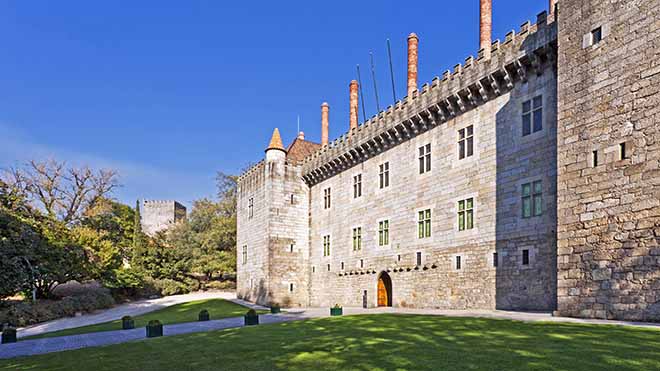
Photo: Paço dos Duques de Bragança © Shutterstock_PN_UN_StockPhotosArt
We have left the most iconic monuments of Guimarães to the end of the visit. The impressive Palace of the Dukes of Bragança (15), a beautiful example of the architecture typical of 15th century manor houses. It is a Gothic building which has features not often seen in Portugal because of their Norman influence. This is a place that can be enjoyed by everyone - the entrance is level, the areas are open and there is a lift for access to the upper floor. Audio equipment is also available to support the visit, as well as a route in Braille and pieces to touch that provide a tactile experience.
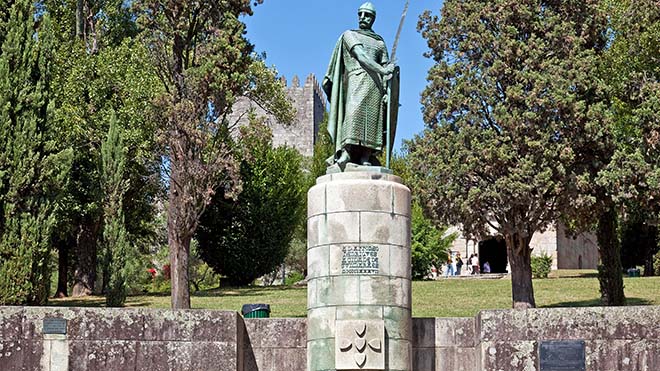
Photo: Paço dos Duques de Bragança © Shutterstock_PN_UN_StockPhotosArt
But the visit to the Castle (17) is rather more complicated for people with impaired mobility, since there are several steps, both at the entrance and in the accesses to the indoor areas, and the floor is uneven. Afonso Henriques, the first King of Portugal, was born in this fortress, which dates back to the 10th century. According to legend he was baptised in the Church of São Miguel (16) a small chapel which is not accessible independently. This monarch is remembered in a statue (14), another fundamental symbol of the city of Guimarães and the image that closes this tour.



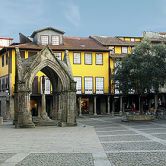
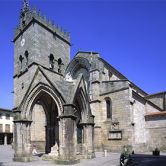
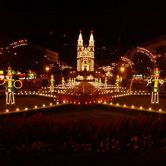


 Explore
Explore 
 Remember and Share
Remember and Share 


